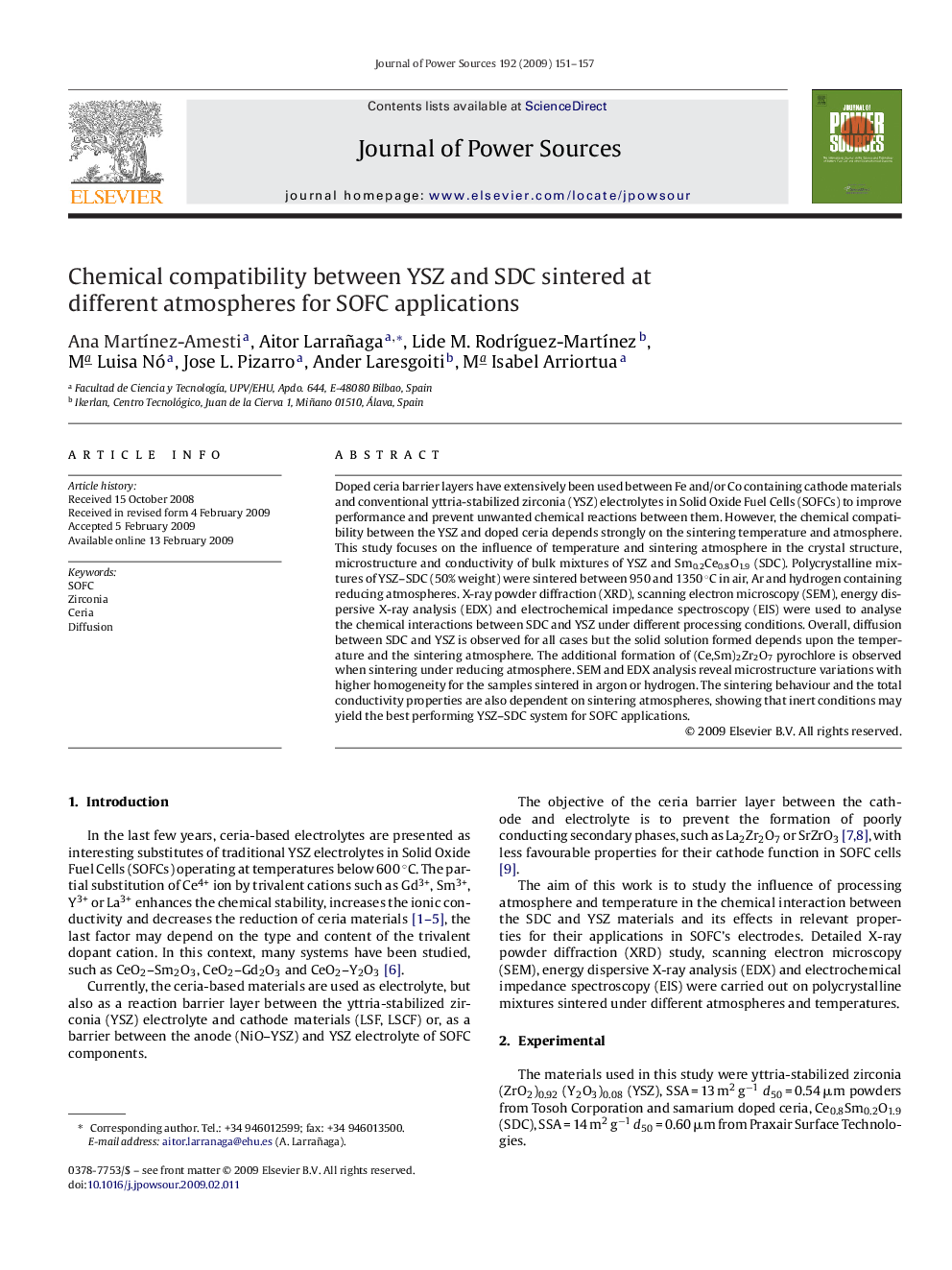| Article ID | Journal | Published Year | Pages | File Type |
|---|---|---|---|---|
| 1294211 | Journal of Power Sources | 2009 | 7 Pages |
Doped ceria barrier layers have extensively been used between Fe and/or Co containing cathode materials and conventional yttria-stabilized zirconia (YSZ) electrolytes in Solid Oxide Fuel Cells (SOFCs) to improve performance and prevent unwanted chemical reactions between them. However, the chemical compatibility between the YSZ and doped ceria depends strongly on the sintering temperature and atmosphere. This study focuses on the influence of temperature and sintering atmosphere in the crystal structure, microstructure and conductivity of bulk mixtures of YSZ and Sm0.2Ce0.8O1.9 (SDC). Polycrystalline mixtures of YSZ–SDC (50% weight) were sintered between 950 and 1350 °C in air, Ar and hydrogen containing reducing atmospheres. X-ray powder diffraction (XRD), scanning electron microscopy (SEM), energy dispersive X-ray analysis (EDX) and electrochemical impedance spectroscopy (EIS) were used to analyse the chemical interactions between SDC and YSZ under different processing conditions. Overall, diffusion between SDC and YSZ is observed for all cases but the solid solution formed depends upon the temperature and the sintering atmosphere. The additional formation of (Ce,Sm)2Zr2O7 pyrochlore is observed when sintering under reducing atmosphere. SEM and EDX analysis reveal microstructure variations with higher homogeneity for the samples sintered in argon or hydrogen. The sintering behaviour and the total conductivity properties are also dependent on sintering atmospheres, showing that inert conditions may yield the best performing YSZ–SDC system for SOFC applications.
